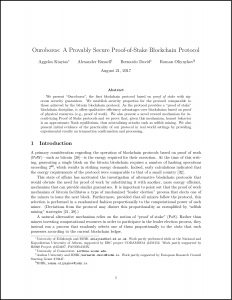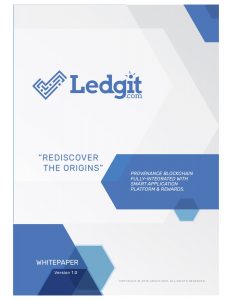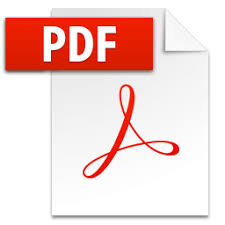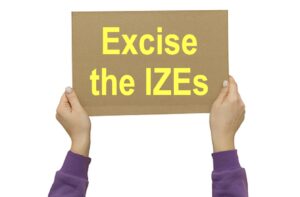
Top 10 tips for ICO white papers
Every new cryptocurrency needs a white paper on how to explain and promote an ICO.
So does every new token having an ITO.
Industry experts are saying the era of big-money ICOs may be over, so ICO white papers must be better than ever.
By this point, I’ve worked on 10 ICO white papers about everything from AI to video game advertising. And I’ve read many dozens more.
Just like white papers for any niche, I find that a few are great, most are so-so, and a few are terrible.
Based on what I’ve seen, here are my top 10 suggestions for how to make any ICO white paper better.
ICO white paper tip #1: Know your audience

Beginning writers tend to focus on what they’re interested in. So do far too many people doing content marketing.
But it’s far more effective to write about what your audience cares about. Doing that will attract and keep their attention.
How do you do that?
Well, first think about who you’re trying to reach.
Are they academics or developers, keenly interested in cryptography and the latest innovations in your approach to blockchain?
Or are they business people or investors, more interested in your market space, your business model, and how your new alt-coin stacks up against all the rest?
And if you need to, do some research into your audience. Meet some of them and talk to them. Ask them what kind of information they value in a white paper, and what kind they can do without.
You can structure your ICO white paper to appeal to either type.
To reach academics or developers, your white paper should focus on a mathematical or technical problem and a better way to solve it.
These often include code samples, math formulas, use-case diagrams, and notes about intricate design tradeoffs.
They usually have footnotes to journal articles or other academic white papers. They’re usually formatted to resemble a math journal created with LaTeX.
These white papers are best for attracting developers who find these challenges stimulating and would like to help solve them.
And these can help you gain so-called “thought leadership” around a certain issue in the blockchain space.
Here’s an example with most of the elements of this type. (Click to download the full paper.)
To reach business people or investors, your white paper should focus on an industry problem and how your proposed new cryptocurrency will solve it.
These often include third-party research, market sizing, and notes about the ecosystem or niche to be created.
They usually have footnotes to magazine or forum articles or third-party research.
They’re formatted with a more attractive design.
These white papers are best for attracting investors to an ICO.
That’s because most investors lack the technical knowledge—and patience—to appreciate the nuances of an academic white paper.
Here’s an example with most of the defining qualities of this type. (Click to download the full paper.)
When it comes to doing an ICO white paper, don’t write the type you’re personally comfortable with.
Write the type that will appeal to your target audience.
In most cases, that means a commercial-type ICO white paper for investors.
ICO white paper tip #2: Respect your audience

This may sound too basic to mention, but I’ll say it anyway.
A company founder once told me this about his ICO prospects: “We’re looking for rich Asians with more money than brains. People who don’t care if they get any return from us, but just want to dump money out of their country!”
How can anyone run a business when they despise their investors that way?
With an attitude like that, any ICO—and the business behind it—is bound to fail, or never get off the ground in the first place.
If you’re doing an ICO simply to fleece your investors, I don’t want any part of your white paper or your new cryptocurrency. And I hope no one else does.
Blockchains may be able to generate “trust” where there is none, but they can’t create “respect” where there is none.
ICO white paper tip #3: Build a strong argument for your coin

The biggest failing I see in most ICO white papers is a weak rationale for creating yet another cryptocurrency or token.
More than 5,000 cryptocurrencies have now been launched. There’s just no need for that many. Same for new tokens.
Many of those were scams. Most have already failed.
Many starry-eyed dreamers created new alt-coins or tokens to raise money for startups.
In the heydays of 2017, that was an easy route to funding.
Today that path is much narrower, and startups must work hard to justify any new alt-coin.
Some of the resulting white papers touch on a real business problem that should be solved. But most do a poor job of explaining why their cryptocurrency or token is the best way to solve that problem.
In fact, this is one question I always ask: “Why do you need a new coin or token for that?”
In most cases, the very same mission could be accomplished using any traditional fiat currency like U.S. dollars or Euros.
So if you want to establish a new coin or launch a new token, build a strong case for why it’s needed.
ICO white paper tip #4: Dig for third-party proof

Related to the previous tip, the weaker ICO white papers I see don’t include much in the way of proof points or third-party research.
The issue is the same as for any other white paper. Just because you say something is so, doesn’t make it so. Where’s the proof?
You may have a truly incisive view of a nagging world problem. But are you sure no one else has ever thought anything similar? Are you sure no one else agrees with you? Find your allies and quote them.
And what about the people who vehemently disagree with you? Sum up their concerns, and then try to demolish them.
As explained in this article, every declaration or claim in a white paper should be backed up by a pile of evidence.
What makes good evidence?
- Specific names, numbers, dates, and times
- Quotes from experts or reliable sources
- Surveys by associations or trade groups
- Government reports
- Articles from respected trade journals
And as explained in this article, the best evidence meets all four tests for proximity, authority, timeliness, and relevance.
If you don’t spend at least two or three days digging for research to support the pitch in your ICO white paper, your document will have big holes in it.
For example, I recently analyzed 10 ICO white papers selected at random, and found these had an average of 15 footnotes each.
Two other ICO papers I worked on personally had 45 and 65 footnotes!
If you don’t dig for proof, potential investors may not know exactly what’s missing. But they will feel in their bones that you haven’t built a persuasive case.
ICO white paper tip #5: Include a good photo of everyone on the team

A typical part of every ICO white paper is “The Team.”
This is supposed to present your management team in the best possible light, showing that you pulled together a good mix of youthful enthusiasm and seasoned business experience.
But if your team doesn’t look like a team, that’s no good.
It’s not enough to paste in tiny headshots from LinkedIn. Or show some photos in color and others in black-and-white.
That makes investors wonder how committed the people in your list really are.
For everyone on the team, get a recent color photo on a neutral background. Crop them so that all the heads are pretty much the same size. Don’t use an action shot with a cluttered background.
Don’t let anyone wear a sports jersey or a T-shirt with somebody else’s logo on it. What are you trying to promote, your ICO or a local football club?
Some companies in this space are really getting it right.
For example, Tradebits is a new cryptocurrency exchange with a great set of photos of the team. Here are three examples.

There are six more full-sized photos on the company website that are just as good as these.
What makes these photos good?
- Everyone is shown in a full-length photo in an informal pose
- Black-and-white brings everyone’s clothes into the same tones
- Everyone’s head and shoulders are about the same size
- Everyone has a smile or an approachable expression
Just from seeing these photos, don’t you feel like you already know these guys? That they have nothing to hide? And that they’re all working closely together?
That’s exactly the impression you want to give with the photos of your team.
What makes a good profile photo?
Photofeeler.com is a site where you can post a profile picture and get visitors to rate it for qualities like competence, likability, and influence.
You can rate other people’s photos to gain views, or buy a bundle of views for a few dollars. The feedback you’ll get is blunt but honest.
For more tips on what makes a good profile photo, visit https://blog.photofeeler.com/business/
Someone on your team may say they don’t have a good picture. I’ve heard this most often from technical people in Eastern Europe.
What?! They don’t have a smartphone or a digital camera? They don’t have a friend who can snap a picture of them? They don’t have any beige wall they can stand in front of?
What are they hiding?
Would you invest in a company whose team members made excuses about getting a color photo? I wouldn’t.
If you need a hand to pull all these photos together and make your team look like a team, ask a professional designer for help. More on that in tip #7.
ICO white paper tip #6: Include a good bio for everyone on the team

The natural companion to a good photo is a good bio, for exactly the same reason.
A disjointed pack of bios sounds like your team isn’t a coherent team.
For everyone on the team, get a standardized bio that sums up their role, their experience, and their education. Include the city or country where each person is located. For academics, list their key teaching posts or books published.
These profiles don’t have to be long: 50 or 100 words is fine.
But make them all the same length.
Showing half a page on one person but three lines on another can make the second person look like an afterthought.
At the start of a bio, I like to see a summary that shows the main theme in the person’s career—even if that’s not always easy to spot.
Here are a few examples of what I mean:
- For the past 15 years, Andre has been helping people learn and solve problems with consumer software. (17 words)
- Transportation is in Zola’s DNA. He has worked as a taxi driver and a ferry boat captain, and he holds a commercial helicopter pilot license. (27 words)
- You could say Josie lives to eat. She grew up working in her family’s restaurant, shopped in local markets six mornings a week, earned a Grand Diplôme from le Cordon Bleu in Paris, and started her own food distribution business at age 28. (43 words)
These standardized bios aren’t simple to come by, believe me. These can be one of the toughest parts of your entire white paper to write.
If you need a hand to pull together a good set of bios, ask a professional writer/editor. For example, I can usually develop a good brief bio working from LinkedIn, any available resume, and a few e-mailed questions.
ICO white paper tip #7: Make it easy on the eyes
Another element that every ICO white paper needs is good page design and some strong, clear illustrations.
Let’s consider page design first.
ICO papers for academics or developers: Many of these are formatted with the typesetting system LaTeX/TeX, which you can download here and use free of charge under Windows, MacOS, or Linux.
LaTeX generates lovely typography and handles math formulas well. The default values create a document that looks like a paper from a mathematics journal.
I learned it in a few hours and found it delightful to use.
Like all formatting languages, sometimes the smallest mistake can make your document blow up. But once you figure it out, you’re flying again.
I especially love the default Computer Modern font, shown below:

ICO papers for business people or investors: Normal-budget papers are created using three main tools: Word or Google Docs to draft the text, and then InDesign to design attractive pages and output a PDF:
OR
→
→
Lower-budget papers are written and formatted using Google Docs or Word, and then saved as a PDF:
OR
→
There are some things you just can’t do in Google Docs, especially with tables and graphics.
But I find it better for gathering comments and less fussy all-around than using Word. And I’m a bit of a power user of Word: I’ve been using it since 1985.
See this article for a head-to-head comparison between Word and Gdocs.
Whatever your design tool, leave lots of white space in margins around the text, like 1.5 inches or 4 cm.
And for Pete’s sake, put the text in 100% black so that people over 40 can actually read it! You do want their support, right?
For more details, see tips #6 and #7 in this article.
Beyond page design, all ICO white papers need graphics. In fact, the 10 ICO white papers I analyzed had an average of 6 graphics each.
These could include a flowchart of your new alt-coin in action, and perhaps a vision of the new ecosystem you propose to create.
For occasional graphics simply to break up the pages, inexpensive stock photography is a good option.
If you need a hand to design good-looking pages and create original graphics, ask a professional designer. How much will that cost?
Plan on spending about US$250 per original graphic and $2,500 for designing about 25 pages. That totals $4,000 and up to improve the visual appeal of your white paper.
The more graphics, and the more pages, the more these graphic costs will go up.
Is it worth it? When you’re trying to impress investors and raise millions, absolutely.
ICO white paper tip #8: Leave out the kitchen sink

Most companies publishing their first-ever white paper cram in everything but the kitchen sink.
In other words, they try to do much in one document.
The 10 ICO white papers I analyzed were on average 19 pages or 5,600 words.
But I’ve worked on a couple of papers that were more than 70 pages long! That’s 20,000 words. That’s just too much for anyone to absorb from one document.
Nobody says all that has to be contained in one document.
If you have that much to say, I recommend splitting it up into two or three separate documents:
- A problem/solution that explains the opportunity and your new blockchain solution at a high level
- A deep technical backgrounder that includes the math formulas, software architecture, code samples, and main use cases at a detailed level
- A simpler backgrounder that describes how the new coins will be created, how the revenue will flow among the players, and how the ICO will work
Most potential investors will be interested mainly in white paper #3.
ICO white paper tip #9: Publish more than a white paper
I’ve seen ICO websites that are little more than a link to download a white paper and a place to sign up for an e-mail list.
Surely you can come up with more content than that!
Here’s an idea: What about repurposing parts of the white paper as blog posts, or supplementing it with further information?
For example, why not publish:
- A FAQ on the ICO to answer the most common questions you hear
- A PowerPoint with voiceovers for those who prefer to view a presentation
- An infographic that sketches in the problem and how your new coin will solve it
- An explainer video that sums up the basic idea in just a minute or two
“When it comes to raising funds for your ICO, the white paper is just the tip of the iceberg,” agrees Dylan Bridger, President and COO at ZenRevenue, a blockchain content marketing company based in Canada.
“In addition to a flawlessly written white paper, it’s important to publish content that further breaks down your offering to potential investors and demonstrates thought leadership,” he notes.
“While the white paper explains the technical details of your project, the supplementary content helps to reinforce your value propositions, humanize your brand, and instill trust in your audience.”
ICO white paper tip #10: Get help from an experienced editor

Are you depressed to hear that you need to put in a lot more effort before your draft white paper is ready to use?
What if you can’t find the time?
Or your team lacks the skills to do that kind of editing, especially in English?
You may want to get help from an experienced ICO white paper editor who can polish up your draft.
A good editor can do things like strengthen your proof points, make your team sound like a team, and explain your ideas in more readable text.
How much will that cost?
Plan on spending at least $100 per page for revisions and copyediting. That will total $2,500 or more to make your 25-page draft far more readable, more professional, and more persuasive.
The rougher the original text and the more pages, the more the editorial costs will go up.
Is it worth it? When you’re trying to impress investors and raise millions, absolutely.
As a bonus, an experienced ICO white paper writer can also help you follow the conventions of these documents, and pose queries about your business model and the justification for your token.
Some can even operate as consultants who help you refine your ideas.
Conclusion
Follow all these tips, and your ICO white paper will stand out in the crowd as one of the few that are great.
For any blockchain ICO, a good white paper can make the difference between raising millions of dollars or Euros and achieving all your goals… or falling flat and having to give up on your dreams.
Want to hear whenever there’s a fresh article on this site? Subscribe here to stay in the know on long-form content. From time to time, we’ll also send you word about some great new resource or training. And you can unsubscribe any time. sc








This informative article will be very helpful for those who want to know about digital cryptocurrency business. Thank you so much.
Thank you for sharing these whitepapers for ICO. Keep sharing!